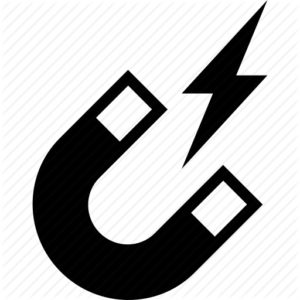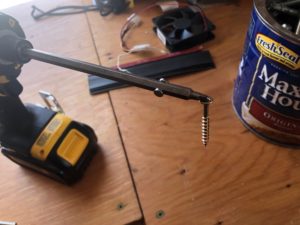 Regardless of how big or comprehensive your selection of tools is onboard, it’s hard to dispute that a good selection of screwdrivers is essential. If you’re wondering where to start, Bob Villa has a pretty good primer on screwdrivers, and points out what he thinks are the 5 most common types of screwdrivers you should be familiar with. Here’s a Screw Drive Wiki Page to really want to get into the different types.
Regardless of how big or comprehensive your selection of tools is onboard, it’s hard to dispute that a good selection of screwdrivers is essential. If you’re wondering where to start, Bob Villa has a pretty good primer on screwdrivers, and points out what he thinks are the 5 most common types of screwdrivers you should be familiar with. Here’s a Screw Drive Wiki Page to really want to get into the different types.
If you’ve never heard of something like torx heads, don’t worry. You don’t now need to go buy a torx head set if there aren’t actually any torx screws on your boat, so take a look around and decide what type of screw head you’ll be dealing with before you commit to any new purchases. But…if you are thinking of buying something specifically for your boat, remember to buy a magnetic screwdriver set. Do a search online or just walk into a hardware store, you’ll see that magnetic sets are available everywhere and won’t really cost much more than non-magnetic.
Why is this important?
I’m glad you asked.
When working on your boat with your fancy new screwdrivers, or any tool for that matter, you’ll likely be on or near the water. If you drop the screw, Murphy’s Law says it’s going to land in the water. Even if you’re lucky enough to have it stay in the boat, it will surely find the tiniest space down in the bilge somewhere to wedge itself. If you remembered to buy magnetic screwdrivers as your shiny new set, the screw would have hung onto the end of the screwdriver and not ended up in the bay or the bilge.
Now if you already have a screwdriver set that you like and it isn’t magnetic, you don’t need to go buy a new set. There are a couple tricks you can do with your existing set to make them magnetic and save you from buying new ones. Keep in mind that the shafts must be made from a magnetic metal. For most people this will be tools that contain iron (the main ingredient of steel), nickel and/or cobalt.
The first trick you can do is magnetize your screwdrivers, or any other tool for that matter…yourself. Lots of videos on YouTube can show you how to do this. Here’s a quick and easy one. The best magnets for this are called rare earth magnets, the most common of which is called a neodymium magnet.
Another thing you can do which is similar to the first trick, is to leave a rare earth magnet attached to your tool. It will then stay magnetized as long as the magnet is still there. This picture below shows my robertson bit with two small rare earth magnets attached. For scale, that’s a 1.5″ wood screw hanging off the end, and the magnets are 6mm (15/64″) in diameter by 2mm (5/64″) thick and came in a pack of 180, so there are many to go around.

I went with such a small size since I didn’t want anything too heavy on a spinning tool like a drill bit. If I was to do it again, I would likely buy something slightly larger so I could also use them on my socket set with heavy items like nuts and bolts. I can still use these small ones, but 10-12 of them looks a bit silly, and could be replaced with 1-2 larger ones. I’ve also ordered some bar magnets to see if I like them better than the round ones on larger tools.
Just do a search on Amazon for Rare Earth Magnets, and there will be many shapes and sizes to chose from. You can also find them at industrial supply houses like McMaster-Carr and Grainger.
Don’t forget, anything made from a magnetic metal can be magnetized with these tricks so use your imagination. For example, you can also create a magnetic tool to dig items out from their frustrating hiding places which are otherwise unreachable. Just remember that if these little magnets do come into contact with a metal surface that they like better than your new super-duper-recovery-tool and they decide to stay behind, you may now have another problem to solve. Keep them close to the handle or cover them with your hand or tape if possible when searching or reaching for lost items.
Have fun!


Leave a Comment